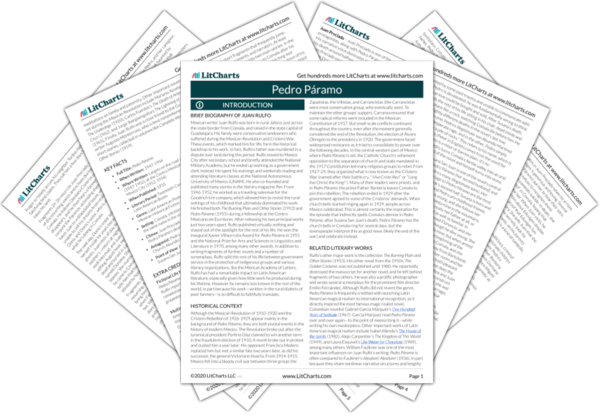For Pedro Páramo, the town’s ultimate crime is defiance: it refuses to recognize his tragedy as a tragedy, even if it’s all based on a misinterpretation. Unable to exert total power over Susana, with whom he’s never truly able to have a loving relationship, Pedro cannot stand the town escaping his control, too, so decides to prove his power by destroying it. This scene also evokes the end of the Cristero War between the Mexican government and Catholic Church leaders in western Mexico (including the area surrounding Comala). When the war ended, church bells sounded for the first time in many years, so this might be what the townspeople think they’re celebrating. Rulfo himself lived through this celebration, which likely influenced this scene. But it’s perhaps more likely that the townspeople think the church bells are marking the Feast of the Immaculate Conception, an important celebration of the Virgin Mary generally held on December 8th. The festival is celebrated at the important pilgrimage site of San Juan de los Lagos in Jalisco, the state where Rulfo grew up, and which borders Colima (where Comala is located). It’s no coincidence that Susana
San Juan shares her name with this town (and a frequent association with water, when los Lagos means “the lakes”). Moreover, the circus performers who arrive for this festival are a direct reference to the story of the Virgin of San Juan de los Lagos, the venerated statue of the Virgin Mary that the festival celebrates. Essentially, the statue was originally recognized as miraculous when it healed a girl who was severely injured during a circus act.
